| |
Global Harmony Association (GHA) http://peacefromharmony.org GHA-Pakistan Department http://peacefromharmony.org/?cat=en_c&key=847 Approved by the GHA members, October 24, 2018 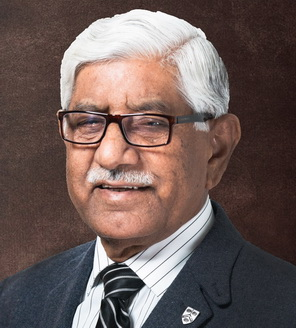
Dr. Noor M. Larik,
GHA-Pakistan President, GHA Vice-President:
http://peacefromharmony.org/?cat=en_c&key=249, GHA Ambassador of Peace and Disarmament from Harmony in Pakistan, Advisor on Statistics (2003-to date), Comsats Institute of Information Technology (CIIT); Director General (1994-2003), Federal Bureau of Statistics (FBS);
Chief Statistician, Pakistan Council for Science and Technology (PCST). Islamabad, Pakistan,Ph: Personal page: http://www.peacefromharmony.org/?cat=en_c&key=722 Email: nmlarik@hotmail.com 9 Members: Photo, name, DOB, edu/degree, (publications), m/status, work, city, phone, (web), email
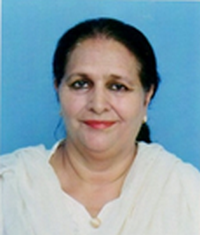 | Ms. Radhida Bokhari, D0B: September 16, 1952 Edu:MA Economics, Married, 3 children | Principal Training Wing, Federal Bureau of Statistics, | Lahore, Ph: +92-321-4122646 | rashida.bokhari@hotmail.com, | | | | | | 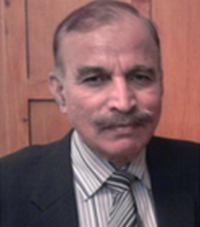 | Mr. Mazhar Hussain Hashmi, DoB: August 8, 1947 Edu: MA, Applied Population Research, Married, 3 children | Deputy Director General (retired) from Federal Bureau of Statistics, Islamabad | Islamabad, Ph: +92-333-5580709 | mazharibd@gmail.com, | | | | | | 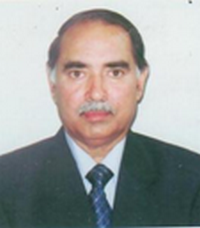 | Mr. Habib Ullah Khan DOB: 28 Sept, 1954. Edu: MSc(Stats), MS(Applied Stats), USA, Married | Working as Member (Census & Surveys), Pakistan Bureau of Statistics, | Islamabad, Ph: 00923005283123 00923315422546 | habibullah54@gmail.com, | | | | | | 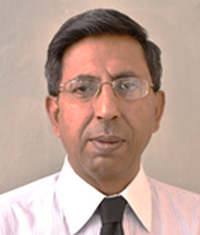 | Mr. Zia-ul-Islam, DoB: August 3, 1957 Edu: M.Sc. Statistics, Married, 3 children | Chief Statistical Officer (retired), from Pakistan Bureau of Statistics, Islamabad | Rawalpindi, Ph: +92-333-5265266 | hdrziaulislam@gmail.com, | | | | | | 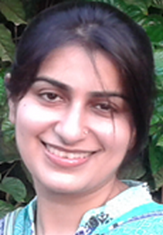 | Ms. Syeda Ayesha Bokhari DOB: January 19, 1982 Edu: M.Sc. Geography Post Graduate Diploma (International Affairs) Married, 2 children | Teaching in schoool | Lahore, Ph: 92-321-4638556 | ayeshabokhari@hotmail.com, | | | | | | 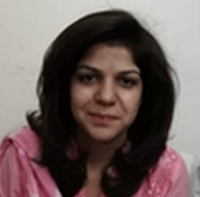 | Mrs. Javaria Bokhari DoB: January 8, 1979 Edu: MA, English and Mass Communication | Teaching in school system Learning Caravan | Lahore, Ph: +92-321-4125323 | Ja.varia@hotmail.com, |
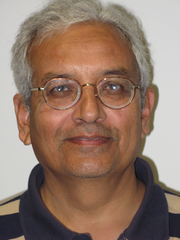
|
Dr. M. Zafar Iqbal* Professor Emeritus in Physics Semiconductor Physics Laboratory, Quaid-i-Azam University, Islamabad, Pakistan.and Former Dean, Faculty of Natural Sciences, Quaid-i-Azam University, Islamabad, Pakistan. | |
Phone (Office):
0092-051-90642102 |
mziqbal49@gmail.com, mzi8149@yahoo.com,
|  | Mr. Umer Zia, DoB: Sept. 20, 1988 Edu: MBA, MS: Unmarried | Fares & Exhibition Officer, Rawalpindi Chamber of Commerce | Rawalpindi, Ph: +92-313-5275277 | iumerzia@gmail.com, | | | | | | 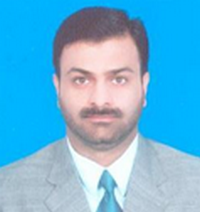 | Mr. Saqlain Raza, DoB: 09 Jan 1977, PhD/ Applied Statistics, Math, Publications – 4, Married, 3 children, | COMSATS University Islamabad - Assistant Professor in Statistics | Islamabad, Ph: 0092308 4343796 | bhatti_sb@yahoo.com, | http://ww3.comsats.edu.pk/faculty/FacultyDetails.aspx?Uid=19388 | | | | | | | 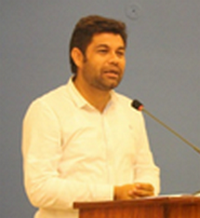 | Mr. Mansoor Shaukat Khan, DoB: 07-03-1974, PhD/ Applied Statistics, Math, Publications – 9, Married | COMSATS University Islamabad – Assistant Professor | Rawalpindi, PUNJAB, Pakistan, Ph: +923329453642 | fuzzyrelation@gmail.com, | http://ww3.comsats.edu.pk/faculty/FacultyDetails.aspx?Uid=486 | |
*Brief Biographical Sketch Dr. M. Zafar Iqbal is currently holding the position of Professor Emeritus at the department of Physics at Quaid-i-Azam University, Islamabad in Pakistan. He holds a Ph.D. degree in Semiconductor Science and Technology from the University of Manchester, UK. He has experience of teaching and research at university level extending over more than four decades, having imparted training in his field of research to a number of M.Phil. and Ph.D. students. He has a number of research publications in reputed journals in his field and has presented his research contributions at a number of international research conferences and holds membership and fellowship in some of the leading learned societies at the international level.
------------------------------------------------------------------------------------------------------
GHA-Pakistan has been approved Dear GHA members, I am happy to inform and congratulate you, especially the 10 GHA-Pakistan members with their unanimous, without any objection, approval of your new GHA national branch on October 24, 2018. Its President Dr. Noor Larik was approved by the GHA Vice-President, GHA Board Member (http://peacefromharmony.org/?cat=en_c&key=249) and the GHA Ambassador of Peace and Disarmament from Harmony in Pakistan. We are happy to congratulate him on these well-deserved appointments.
This message, along with several responses, is published on its page here:http://peacefromharmony.org/?cat=en_c&key=847 and as the GHA big news: http://peacefromharmony.org/?cat=en_n Thank you all for your replies. In the next week I will offer some action plan for the GHA-Pakistan and would be grateful for your initiative proposals in it. Thanks.
Best wishes for peace from harmony through science,
Dr. Leo Semashko,
GHA Honorary President,
25-10-18
Дорогие члены ГСГ,
Счастлив сообщить и поздравить вас, особенно 10 членов ГСГ-Пакистан с их единодушным, без единого возражения утверждением вашего нового национального отделения ГСГ на 24 октября 2018. Его Президент Д-р Нур Ларик был утвержден Вице-Президентом ГСГ, Членом Правления ГСГ (http://peacefromharmony.org/?cat=en_c&key=249) и Послом ГСГ Мира и Разоружения из Гармонии в Пакистане. Мы счастливы поздравить его с этими заслуженными назначениями. Это сообщение вместе с несколькими откликами опубликовано на его странице здесь: http://peacefromharmony.org/?cat=en_c&key=847и как ГСГ большая новость: http://peacefromharmony.org/?cat=en_n Спасибо всем за ваши отклики. В ближайшую неделю я предложу некоторый план действия для ГСГ-Пакистан и был бы благодарен вам за ваши инициативные предложения в него. Спасибо. Лучшие пожелания мира из гармонии через науку,
Лев Семашко,
Почетный Президент ГСГ,
25-10-18 ------------------------------------------------------------------------------------ Некоторые отклики Some responses
Dear Dr. Leo,
Hopefully you are fine and busy in your work. Dr. Noor Muhammad Larik has directed me to for ward the simplified table
of Spherons of Pakistan to send it as required by you which can be found in the attached file. With best regards Zia-ul-Islam
+92-333-5265266
http://peacefromharmony.org/?cat=en_c&key=847
30-11-18
Statistics of the Spherons (spheral classes) Population of Pakistan
On 2014-15 Year Dr. Noor Muhammad Larik S. Mazhar Hussain Hashmi Ms. Rashida Bukhari Zia-ul-Islam Table-1. The number of Spherons of Pakistan in 2014-15 Year in Million people. Spheral Indices | Population = the employed in four spheres of social production; | 2014-15 | % | Or economically active + non-working population | P | All Population: P = P1(P1n+P1w) +P2+P3+P4; | 189.190 | 100% | Or: P = P1n + PZw | P1n | P1n = non-working population. P1n = P – PZw | 131.872 | 69.70 | PZw | Economically active population, working in four spheres. | 57.318 | 30.30 | PZw = P1w+P2+P3+P4 | P1 | Spheron-1: P1 = P1w + P1n | 145.091 | 76.69 | P1w | P1w = sum of the working in the branches of Sociosphere: | 13.219 | 6.99 | | HEALTH AND SOCIAL SERVICE | 11.336 | 5.99 | | EDUCATION | 1.883 | 1.00 | P2 | Spheron-2 = sum of working in the branches of Infosphere: | 0.267 | 0.14 | | COMMUNICATION | 0.224 | 0.12 | | SCIENCE AND SCIENTIFIC SERVICE; Designing | 0.013 | 0.01 | | CULTURE, ART | 0.030 | 0.02 | P3 | Spheron-3 = sum of working in the branches of Orgsphere: | 1.499 | 0.79 | | PUBLIC ADMINISTRATION, DEFENCE and SECURITY | 0.229 | 0.12 | | FINANCIAL INTERMEDIATION | 0.136 | 0.07 | | Others: public organizations, etc. | 1.134 | 0.60 | P4 | Spheron-4: = sum of working in the branches of Technosphere: | 42.333 | 22.38 | | AGRICULTURE, HUNTING AND FORESTRY | 23.701 | 12.53 | | FISHING | | | | MINING AND QUARRYING | 0.070 | 0.04 | | MANUFACTURING | 8.158 | 4.31 | | ELECTRICITY, GAS AND WATER SUPPLY | 0.181 | 0.10 | | CONSTRUCTION | 4.065 | 2.15 | | WHOLESALE AND RETAIL TRADE; REPAIR | 1.293 | 0.68 | | HOTELS AND RESTAURANTS | 0.037 | 0.02 | | TRANSPORT AND STORAGE | 2.605 | 1.38 | | REAL ESTATE, RENTING AND BUSINESS ACTIVITIES | 0.016 | 0.01 | | | | | | | | | | Others: nature conservation, folk crafts, water supply; sewerage, waste management and remediation etc. | 2.207 | 1.17 | | Statistical error | | |
*FISHING is included in AGRICULTURE, HUNTING AND FORESTRY. 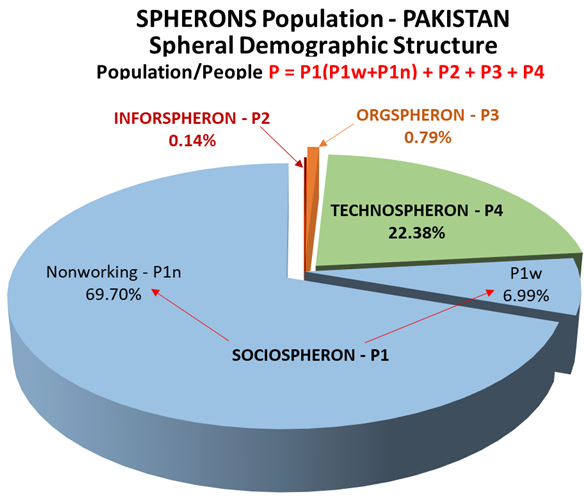
---------------------------------------------------------------
Hi Dr Leo. Thank u so much for making me the member of such a senior team. I'm really v sorry for being late. And not responded u quickly. I will put my all efforts to work on time. Thank u so much.. Javaria Bokhari ja.varia@hotmail.com 19-11-18 Dear Dr. Leo, Hope you are fine and busy in your esteemed work regarding GHA. Following is my reply to your e-mail. Regarding the response from few members regarding their agreement for the work. I have contacted them, they are ready to work and sending you their consent in 2-3 days. The table sent by you is different from the spherons table prepared by us. I tried to sent you this in a day but there is a confusion regarding the age groups mentioned in the table. Also the addition industries is given. No no doubt it is already included but some time is required to prepare a ne table in this format. Can you give us some time to modify it on this format. Moreover, as already we have been mentioned that in Pakistan, the population of age 10 years and above is included in Labour Force, while in the attached table sent by you is for the age of 16 & above. Could you guide us that how this table may be filled for working persons with age 16 years and above? If we do this, it needs to revise all the work done already. Please let us know that how it should be done?. Regarding trip to Singapore, Yes I am interested to go, but there is a short time. Also would you like to let me know how much and how the payment would be made. As certainly it would be sufficient but I want to make it sure. For India, nobody want to go due to some specific reasons. Waiting for your response especially regarding the table. With best regards Zia-ul-Islam 18-11-18 Dear Dr. Leo Sorry for the delay in this communication. And thank you for approving my selection as a member of GHA Pakistan. I hope I will be able to contribute to this collective effort according to your recommendations and guidelines. Looking forward to have a good intellectual interaction. Thanks and regards, Ayesha 12-11-12 Respected Dr. Leo. This is in response to your previous e-mails about the establishment of laboratory and Extension of team from 10 to 15 members including me and technical support. In this regard our point wise response is as follows:- 1.Could you kindly inform about the sources of funding and procedure for release of funds. 2.Is there possibility for embracing the amount of funds in order to attract/motivate the team members. Moreover, is it also possible to distribute funds on the basis of work of the team members. 3.We are trying to approach the statistical authorities of Pakistan for permission to allocate some space in PBS to establish laboratory. 4.We also shall approach the university to allow us to establish laboratory in the vicinity of university as two members are from the University. However, if not allowed by these organizations, then the members will work at their own places and will discuss their progress in a joint meeting procedure. 5.Two members (teachers) from university have agreed to work on GPS. 6.It is submitted that there are no six provinces but there are only 4 provinces and two areas for which data will not be available. However, for four provinces we will work from previous Labour Force Surveys (LFS) and 1998 census data. With regards, Noor M. Larik 06-11-18 Dear Dr Leo, I appreciate your efforts for improving global harmony. I have read the proposed projects and found myself fit in Number 5. 5. Your university professors could prepare a pilot course on Spheral Statistics for 40-60 hours based on 12 GHA educational projects, a list of which you will find here: http://peacefromharmony.org/?cat=en_c&key=472 Of course my services are there for the global harmony. And, I am ready to prepare the pilot course on Spheral Statistics. But honestly, I have never heard this word before. I shall need some material to start with. For this, I would take the opportunity of your leadership to ask some relevant material. I am unable to get help from the above mentioned website link. Looking forward for the response. Kind regards, Saqlain Raza PhD Statistics, MS Epidemiology (France) Assistant Professor COMSATS University, Park Road, Islamabad 05-11-18 Respected Sir. It is a rare privilege and honor for me to be a part of such noble mission. It will be an honor to contribute my bit under your guidance n command for peace and harmony. Pakistan Department for Peace n harmony will go a long way in to this noble cause by contributing scientific research in this human field. BestRegards RashidaBokhari 27-10-18
-------------------------------------------------------
Dear Dr. Leo Semashko
Thanks for your email.YES, You have my consent. I am very pleased to become the part of the GHA-Pakistan Department of 10 members. With best regards Zia-ul-Islam +92-333-5265266 Thanks to all GHA members. The Pakistani has agreed to work with all brothers of GHA family. With regards, Dr. Noor M Larik YES. Dr Noor deserves to head GHA Pakistan. Good wishes. RAMESH KUMAR Dear Dr. Leo Semashko Thanks for your email.YES, You have my consent. I am very pleased to become the part of the GHA-Pakistan Department of 10 members. Best Regards Dr. Mansoor Shaukat Khan Department of Mathematics COMSATS University Islamabad, Park Road, Tarlai Kalan, Islamabad,45550, Pakistan Cell:+923329453642 Off:+925190495804 Respected Sir, I am very much glad that you have approved the team of nine members. It has been checked and found correct. You can now take action on your side. With regards, Noor M Larik
Respected Sir. It is a rare privilage and honour for me to be a part of such noble mission. It will be an honour to contribute my bit under your guidance n command for peave n harmony. Pakistan Department for Peace n harmony will go a long way in to this noble cause by contributing scientific resarch in this human field. Best Regards Rashida Bokhari
DEAR DR. LEO, DR. SUBHASH CHANDRA, DR. NOOR AND GHA MEMBERS, WE IN GHA MALAYSIA ARE VERY ELATED on THE SIGNIFICANT DEVELOPMENTS IN PAKISTAN.WE PRAY AND HOPE PEACE AND HARMONY WILL BE FURTHER ENHANCED WITH THESE DEVELOPMENTS. DR SABRINA AND DR GOPALA, GHA MALAYSIA, Kuala Lumpur 28-10-18 --------------------------------------------------------------------------------------------------------
Leo Semashko’s structural comment as an intellectual warm-up for scientific
self-assessment of the new GHA team perspectives
The GHA-Pakistan Department, which unites 10 specialists of different professions and employment, has, like any association, a deep spheral societal structure that differentiates people by employment in four spheres of social production and includes them in the corresponding spherons. Spheres and spherons are inseparable, but different, such as, for example, schools and teachers / schoolchildren who fill schools; mines and miners working in them; shops and merchants serving in them, etc. Spheres and spherons differ by the spheral subject and product of their employment.Their infinite number is integrated / classified in the most general, societal macro-scale into four necessary and sufficient for all times and locations spheral clusters: People, Information, Organization, Things (PIOT). There are no hard or formal boundaries between spheres and spherons: each person, according to his/her abilities, capabilities and needs, can move from one sphere and spheron to another or somehow combine them in some process of their change. This structure was researched in more detail statistically on the Pakistan’s population example below. GHA-Pakistan includes 10 people of the following positions and occupations included in the following Spherons: - Sociospheron is: 4 teachers in the GHA-Pakistan, of which 2 - at school and 2 - at university, assistant professors. The subject and product of these workers are the students (P), their education. Therefore, these members in this employment are included in the Sociosphere and Sociospheron of the country, the subject / product of which is people. - Infospheron is: at least 4 GHA-Pakistan members from among retired officials, whose main current employment is statistical information (I), which constitutes its subject and product. Therefore, these members in this employment are included in the Infosphere and Infospheron of the country whose subject / product is information. Other members are also included in this sphere and this spheron, but not by their main employment, but by providing it. - Orgsferon is: 2 members of GHA-Pakistan are currently occupied by management positions: “Principal, Officer”, whose main employment is the organization (O), which constitutes its subject and product. Therefore, these members in this employment are included in the Orgsphere and Orgspheron of the country whose subject / product is the organization. - Technospheron: in this team is not represented by anyone whose main employment is material goods and services combined by the term "things" (T). This small but important example of the GHA-Pakistan informal spheral structure well illustrates the nonlinear, network, stochastic and thermodynamic nature of spherons, which is the main epistemological complexity and difficulty of their knowledge. They made spherons accessible to science only at the end of the 20th and the beginning of the 21st century (http://peacefromharmony.org/?cat=en_c&key=756). However, we should not forget the social obstacles to their knowledge, but this is a special topic, revealed in our “Global Peace Science”, the center and heart of which are in the theory of spherons:http://peacefromharmony.org/docs/global-peace-science-2016.pdf . What individual and social peacemaking perspectives open the team spheral structure and spheral content / vision / thinking presented in the statistical research of the Pakistan spherons (below)? The main perspective, strategy and navigation of the team in the modern context is the further scientific development of spheral statistics as the leading discipline among the key peacebuilding tools of the 21st century. The ideal harmonious intellectual prerequisites for this were formed in the team. on the one hand, it includes 5 members of the older generation from among the leading scientific professional statisticians of the country, personifying the national statistical color, having the richest experience of national statistics and its highest achievements in the past. on the other hand, it includes 5 members of the younger generation, one way or another connected with statistical science and its teaching. The balance and harmony of the rich experience, achievements and heritage of the elders, together with the trained qualified potential of the youth, creates the most favorable ground and conditions for the new system development and application of spheral statistics and its digital technologies. Young scientists, led by and in collaboration with senior specialists could develop it in the new statistical researches of national and international scope, defend relevant scientific theses, write new articles and books of this content, and initiate the creation of appropriate national scientific, applied / technological and business structures.They could govern them and form the new statistical elite of Pakistan to ensure peace, prosperity and leading innovative technological positions in the global statistics and digital economy of the 21st century. Intensive scientific development of global spheral statistics creates favorable conditions for innovative evolution and the breakthrough of humanitarian education in the country, primarily peacemaking and especially interfaith harmonious education (http://peacefromharmony.org/?cat=en_c&key=561).Sociocybernetics, genetics and statistics of global peace allow raising any humanitarian education to a principally new level of efficiency due to the fundamentally new scientific content. Four of the team are related to education, teaching and learning of younger generations. They could prepare innovative pedagogical programs of this scientific content for peacemaking education in all humanitarian disciplines of primary, secondary and higher education in the country. The examples of such programs are presented in the “Global Peace Science”, in 8 books and 12 GHA educational projects for almost 14 years of its work (http://peacefromharmony.org/?cat=en_c&key=472). The 21st century innovative science and education peaks are the main peacebuilding perspectives for the GHA-Pakistan activities, which can naturally expand to other spheres and areas: politics, democracy, economy, business, religion, culture, media, sport, gender equality, children priority and overcoming social pathologies of illiteracy, hunger, unemployment, poverty, homelessness, drug addiction, corruption, crime and the like. In all directions, the team members, by their intellectual potential and spheral thinking, are able to become national peacebuilding leaders. The GHA proposes to organize a one-year cycle of discussions of the proposals and perspectives of the Pakistan Department team expressed in the commentary to broad youth audiences, primarily in schools and universities, in order to ensure the influx of young active members, especially women, and expand its peacemaking influence in the country, creating its network offices and sites in different cities and provinces of the country. The GHA-Pakistan innovative peacemaking example can be the best model for other GHA national departments and other peacemaking organizations on all continents. Ultimately, in the 21st century, a qualitative renewal of both peaceful thinking and the global peace movement will be achieved, which will ensure the eradication of wars, militarism and terrorism, i.e. victory of global peace on the Earth in our century. Only such a peaceful movement with a new, spheral/harmonious and holistic/scientific thinking realizes the great precepts of the past century: "Mankind must put an end to war before war puts an end to mankind," John Kennedy. "We must shift the arms race into a peace race," Martin Luther King Jr. For this, “We shall require a substantially new [SPHERAL- L.S.] manner of thinking if mankind is to survive,” as “Peace cannot be achieved through violence, it can only be attained through understanding” (thinking, science, spheral statistics), Albert Einstein and others. Because, "Nonviolence [harmony, peace, science] is the greatest force at the disposal of mankind," Mahatma Gandhi; and "The mightiest tool [of peace] in the world is the truth," Leo Tolstoy. 21-10-18 Структурный комментарий Льва Семашко в качестве интеллектуальной разминки для научной
самооценки перспектив новой команды ГСГ. ГСГ-Пакистан офис, объединяющий 10 специалистов разных профессий и занятости, обладает, как любое объединение, глубокой сферной социетальной структурой, которая дифференцирует людей по занятости в четырех сферах общественного производства и включает их в соответствующий сферон. Сферы и сфероны неразрывны, но различны, как, например, школы и учителя/школьники, заполняющие школы; шахты и шахтеры, работающие в них; магазины и торговцы, служащие в них и т.д. Сферы и сфероны различаются по сферному предмету и продукту своей занятости. Их бесконечное множество интегрируется/классифицируется в самом общем, социетальном макро-масштабе в четыре необходимых и достаточных для всех времен и локаций сферных кластера: Люди, Информация, Организация, Вещи (ЛИОВ). Между сферами и сферами нет никаких жестких или формальных границ: каждый человек, по мере своих способностей, возможностей и потребностей может переходить из одной сферы и сферона в другую/другой или как-то совмещать их в некотором процессе их перемены. Более детально эта структура исследуется статистически на примере населения Пакистана и некоторых его провинций ниже. ГСГ-Пакистан включает 10 человек следующих должностей и занятий, включенных в следующие сфероны: - Социосферон: 4 преподавателя в ГСГ-Пакистан, из которых 2 – в школе и 2 – в университете, ассистенты профессоров. Предмет и продукт этих работников – студенты (Л), их образование. Поэтому эти члены в этой занятости включены в Социосферу и Социосферон страны, предмет/продукт которых – люди. - Инфосферон: по крайней мере 4 члена ГСГ-Пакистан из числа отставных чиновников, основная текущая занятость которых – статистическая информация (И), составляющая ее предмет и продукт. Поэтому эти члены в этой занятости включены в Инфосферу и Инфосферон страны, предмет/продукт которых – информация. Другие члены также включены в эту сферу и этот сферон, но не по своей основной занятости, а обеспечивающей ее. - Оргсферон: 2 члена ГСГ-Пакистан актуально занимают руководящие посты управленцев: «Principal, Officer», основная занятость которых – организация (О), составляющая ее предмет и продукт. Поэтому эти члены в этой занятости включены в Оргсферу и Оргсферон страны, предмет/продукт которых – организация. - Техносферон: в данной команде не представлен никем, чья основная занятость – материальные блага и услуги, объединенные термином «вещи» (В). Этот небольшой, но важный пример сферной неформальной структуры ГСГ-Пакистан хорошо иллюстрирует нелинейную, сетевую, стохастическую и термодинамическую природу сферонов, которая составляет главную гносеологическую сложность и трудность их познания. Они сделали сфероны доступными науке только в конце 20 и начале 21 века (http://peacefromharmony.org/?cat=ru_c&key=728). Однако, нельзя забывать и социальные препятствия их познанию, но это особая тема, раскрытая в нашей «Науке Глобального Мира», центр и сердце которой заключается в теории сферонов: http://peacefromharmony.org/docs/global-peace-science-2016.pdf. Какие индивидуальные и социальные миротворческие перспективы открывает сферная структура и сферный контент/видение/мышление команды, проявленное в статистическом исследовании сферонов Пакистана (ниже)? Главная перспектива, стратегия и навигация команды в современном контексте – дальнейшее научное развитие сферной статистики как ведущей дисциплины среди ключевых миротворческих инструментов 21 века. В команде сложились идеальные гармоничные интеллектуальные предпосылки для этого. С одной стороны, она включает 5 членов старшего поколения из числа ведущих научных профессиональных статистиков страны, олицетворяющих национальный статистический цвет, обладающих богатейшим опытом национальной статистики и ее высшими достижениями в прошлом. С другой стороны, она включает 5 членов молодого поколения, так или иначе связанных со статистической наукой и ее преподаванием. Баланс и гармония богатого опыта, достижений и наследия старших вместе с подготовленным квалифицированным потенциалом молодежи создает самую благоприятную почву и условия для нового системного развития и применения сферной статистики и ее цифровых технологий. Молодые ученые под руководством и в сотрудничестве со старшими специалистами могли бы развивать ее в новых сферных статистических исследованиях национального и международного масштаба, защищать соответствующие научные диссертации, писать новые статьи и книги этого контента и инициировать в национальном правительстве и Академии наук создание соответствующих научных, прикладных/технологических и бизнес структур. Они могли бы возглавить их и сформировать новую статистическую элиту Пакистана, чтобы обеспечить ему мир, процветание и лидирующие инновационные технологические позиции в мировой статистике и цифровой экономике 21 века. Интенсивное научное развитие глобальной сферной статистики создает благоприятную почву для инновационной эволюции и прорыва гуманитарного образования в стране, прежде всего миротворческого и особенно межконфессионального гармоничного образования (http://peacefromharmony.org/?cat=en_c&key=561). Социокибернетика, генетика и статистика глобального мира позволяют поднять всякое гуманитарное образование на принципиально новый уровень эффективности за счет фундаментально нового научного контента. Четверо из команды связаны с образованием, с преподаванием и обучением младших поколений. Они могли бы подготовить инновационные педагогические программы этого научного контента для миротворческого образования во всех гуманитарных учебных дисциплинах начальной, средней и высшей школы страны. Примеры подобных программ представлены в «Науке Глобального Мира», в 8 книгах и 12 образовательных проектах ГСГ за почти 14 лет его работы (http://peacefromharmony.org/?cat=en_c&key=472). Вершины инновационной науки и образования 21 века – это основные миротворческие перспективы в деятельности ГСГ-Пакистан, которые способны естественным образом расширяться на другие сферы и области: на политику, демократию, экономику, бизнес, религию, культуру, медиа, спорт, гендерное равенство, приоритет детей, преодоление социальных патологий неграмотности, голода, безработицы, нищеты, бездомности, наркотизма, коррупции, преступности и подобные. Во всех направлениях члены команды, по своему интеллектуальному потенциалу и сферному мышлению способны стать национальными миростроительными лидерами. ГСГ предлагает организовать годичный цикл обсуждений высказанных в комментариях предложений и перспектив команды Пакистанского отделения в широких молодежных аудиториях, прежде всего в школах и университетах, чтобы обеспечить приток молодых активных членов, особенно женщин, и расширить его миротворческое влияние в стране, создавая его сетевые филиалы и сайты в разных городах и провинциях страны. Инновационный миротворческий пример ГСГ-Пакистан может стать лучшим образцом для других национальных отделений ГСГ и других миротворческих организаций на всех континентах. В конечном счете в 21 веке будет достигнуто качественное обновление и мирного мышления, и глобального мирного движения, которое обеспечит искоренение войн, милитаризма и терроризма, т.е. победу глобального мира на Земле в нашем веке. Только такое мирное движение с новым, сферным/гармоничным и целостным/научным мышлением реализует великие заветы прошлого века: «Положить конец войне прежде, чем война положит конец человечеству», Джон Кеннеди. «Мы должны сдвинуть гонку вооружений в гонку мира», Мартин Лютер Кинг. Для этого «Мы должны требовать новый [СФЕРНЫЙ – Л.С.] образ мышления, если человечество хочет выжить», и «Мир достигается не насилием, а пониманием» [мышлением, наукой, сферной статистикой], Альберт Эйнштейн и другие. Потому что, «Ненасилие [гармония, мир, наука] является величайшей силой в руках человечества», Махатма Ганди и «Могущественнейшее средство мира — [научная] истина», Лев Толстой. 21-10-18 -------------------------------------------------------------
GHA-Pakistan Department, 10 members. Approval until October 24 Dear GHA members, friends: I am happy to offer for your discussion and approval by your "YES - NO" until October 24, inclusively, the GHA-Pakistan Department of 10 members with its President Dr. Noor M. Larik, former Minister of Statistics in the Government of Pakistan for almost 10 years (1994-2003). His team, along with its key work on the spherons national statistics and my comments is presented here: http://peacefromharmony.org/?cat=en_c&key=847 Dr. Noor has been preparing the GHA Dep. for more than two years. During this time, he assembled a strong team of professional statisticians who conducted brilliant statistical researches of the Pakistani spherons in the national and provincial levels. This great work is done completely volunteer, on enthusiasm and without any payment, as everything is done in the GHA that allows us to achieve the best, brilliant and outstanding results are unique in the world. He and his team are well aware that the best tool for non-violent achievement and ensuring both national and global peace is statistics at its highest scientific level — at the level of spheral statistics, which starts with statistics of spherons dynamics constituting the integrity and genetic code, structural harmony genome of social production or "social autopoiesis" by H. Maturana. only through a deep, scientific and statistical / quantitative understanding of this genetics of global / national peace, through its constant monitoring, comparison at all levels and conscious regulation / prevention of all its emerging partial pathologies, disharmonies, deviations, conflicts, risks and challenges can it be achieved and long security. This is the main peacebuilding idea and tool of our “Global Peace Science” (http://www.peacefromharmony.org/docs/global-peace-science-2016.pdf), which invites all peoples and governments to replace / exclude war with holistic universal spheral statistics preserving and raising the traditional statistics to the highest level of fundamental science. For the first time in history, GPS has put an end to more than two centuries of 100% dictate of military science, its wars and militarism by the theory of structural harmony of spherons that genetically define global peace. The Pakistan's statisticians provided brilliant empirical evidence of spherons using their country's example, along with similar statistical studies in Ghana and Russia, which are published here: http://www.peacefromharmony.org/?cat=en_c&key=836. They will soon be published by a special GHA book. These and similar researches in other countries, not yet completed, create a unique global scientific precedent for the formation of a powerful alternative to war, militarism and military science, which has not been for more than two centuries of its accelerated development, destructive for humanity. Spheral statistics and its technology make it possible to realize the great peacemaking precepts of the past century in this navigation: "Mankind must put an end to war before war puts an end to mankind," John Kennedy. "We must shift the arms race into a peace race," Martin Luther King Jr. For this, “We shall require a substantially new (SPHERAL- L.S.) manner of thinking if mankind is to survive,” because “Peace cannot be achieved through violence, it can only be attained through understanding” (thinking, science, spheral statistics), Albert Einstein and others. Because, "Nonviolence [harmony, peace, science] is the greatest force at the disposal of mankind," Mahatma Gandhi; and "The mightiest tool [of peace] in the world is the truth," Leo Tolstoy. The GHA and its national offices in Ghana, Russia and Pakistan, which were the first to carry out statistical studies of the spherons of their countries, laid the first stones in the foundation of this statistics as a key instrument of global peace in the 21st century. It is also important that this team comes from a Muslim country that vividly demonstrates its deep peacemaking potential, unlike the various fake myths about Islam and the countries of the militarist US / NATO coalition that trample peace. All these arguments and achievements in the framework of the GHA Mission seem to me more than sufficient to approve the GHA-Pakistan office and wish it new achievements on the way of further development and application of spheral statistics and its technology. This team in its professional statistical composition has all the prerequisites to become a leader in the GHA. Therefore, we hope for its active support of the GHA members. Your silence in this undoubted case will also be understood positively. Best wishes of peace from harmony through the spheral statistics science, Dr. Leo Semashko, GHA Founder and Honorary President, http://peacefromharmony.org/?cat=en_c&key=253 22-10-18 Утверждение отделения ГСГ-Пакистан, 10 членов, до 24 октября Дорогие члены ГСГ, друзья! Я рад предложить на ваше обсуждение и утверждение вашими «ДА или НЕТ» до 24 октября включительно Отделение ГСГ-Пакистан из 10 членов во главе с его Президентом Dr. NoorM. Larik, бывшим министром статистики в правительстве Пакистана почти 10 лет (1994-2003). Его команда вместе с ее ключевой работой по статистике сферонов представлены здесь: http://peacefromharmony.org/?cat=en_c&key=847 Dr. Noor готовил Отделение ГСГ более двух лет. За это время он собрал сильную команду профессиональных статистиков, которая провела блестящие статистические исследования сферонов Пакистана на национальном и провинциальном уровнях. Эта большая работа сделана совершенно волонтерски, на энтузиазме, без какой-либо оплаты, как все делается в ГСГ, что позволяет достичь самых лучших, блестящих и выдающихся результатов, уникальных в мире. Он и его команда хорошо осознали, что лучший инструмент ненасильственного достижения и обеспечения как национального, так и глобального мира является статистика на ее высшем научном уровне – на уровне сферной статистики, которая начинается со статистики динамики сферонов, конституирующих целостность и генетический код, геном структурной гармонии общественного производства или «социального аутопоэзиса» по У. Матурано. Только через глубокое, научное и статистическое/количественное понимание этой генетики глобального/национального мира, через ее постоянный мониторинг, сравнение на всех уровнях и сознательное регулирование/предотвращение всех ее возникающих частичных патологий, дисгармоний, отклонений, конфликтов, рисков и вызовов возможно его достижение и длительное обеспечение. Это главная миростроительная идея и инструмент нашей «Науки Глобального Мира» (http://www.peacefromharmony.org/docs/global-peace-science-2016.pdf), которая предлагает всем народам и правительствам заменить/исключить войну целостной универсальной сферной статистикой, сохраняющей и поднимающей традиционную статистику на высший уровень фундаментальной науки. НГМ впервые в истории положила конец более чем двухвековому 100% господству военной науки, ее войн и милитаризма теорией структурной гармонии сферонов, генетически определяющих глобальный мир. Пакистанские статистики дали блестящие эмпирические доказательства сферонов на примере своей страны вместе с подобными статистическими исследованиями в Гане и России, которые опубликованы здесь: http://www.peacefromharmony.org/?cat=en_c&key=836. Они скоро будут изданы специальной книгой ГСГ. Эти и подобные исследования в других странах, еще не завершенные, создают уникальный глобальный научный прецедент формирования мощной альтернативы войне, милитаризму и военной науке, которой не было более двух веков ее ускоренного развития, губительного для человечества. Сферная статистика и ее технология позволяют реализовать великие миротворческие заветы прошлого века этой навигации: «Положить конец войне прежде, чем война положит конец человечеству», Джон Кеннеди. «Мы должны сдвинуть гонку вооружений в гонку мира», Мартин Лютер Кинг. Для этого «Мы должны требовать новый [СФЕРНЫЙ – Л.С.] образ мышления, если человечество хочет выжить», и «Мир достигается не насилием, а пониманием» [мышлением, наукой, сферной статистикой], Альберт Эйнштейн и другие. Потому что, «Ненасилие [гармония, мир, наука] является величайшей силой в руках человечества», Махатма Ганди и «Могущественнейшее средство мира — [научная] истина», Лев Толстой. Исключительная роль в их реализации принадлежит ГСГ и ее национальным отделениям в Гане, России и Пакистане, которые первые провели статистические исследования сферонов своих стран, заложив первые камни в фундамент этой статистики как ключевого инструмента глобального мира в 21 веке. Немаловажно и то, что эта команда - из мусульманской страны, которая ярко демонстрирует свой глубокий миротворческий потенциал в отличие от разных фейковых мифов об исламе и от стран милитаристской коалиции США/НАТО, попирающих мир. Все эти аргументы и достижения в русле Миссии ГСГ представляются мне более чем достаточными, чтобы утвердить Отделение ГСГ-Пакистан и пожелать ему новых достижений на пути дальнейшего развития и применения сферной статистики и ее технологии. Эта команда по своему профессиональному статистическому составу имеет все предпосылки стать лидирующей в ГСГ. Поэтому мы надеемся на ее активную поддержку членов ГСГ. Ваше молчание в этом несомненном случае также будет понято позитивно. Лучшие пожелания мира из гармонии через науку сферной статистики, Лев Семашко, Основатель и Почетный Президент ГСГ, http://peacefromharmony.org/?cat=ru_c&key=286 22-10-18 -----------------------------------------------------------------------------------------------------------------------------
Global Peace Science at the Structural Harmony Genetic Level: Statistics of Pakistan’s Spherons for 2014-15 By Dr. Noor M. Larik Ms. Rashida Bokhari S. Mazhar H. Hashmi Zia-ul-Islam For the IPRA “Peace Theories & History Commission” Abstract The modern nature of WAR is entirely different from the WARS being happened in the past leaving not-forgettable events at individual as well as at national level. However, factors and causes are the same of the WARS of both natures. Besides, this there is another type of war, which is always in action amongst the individuals, groups, parties within the countries. Moreover, the economic classes in the societies is the main factor for such wars. It guides us to move for a system of equalities of two types i.e. financial and social. Pakistan is badly affected by disharmonious conditions in the society.The global peace harmony is much needed in the country. Now it seems the solution of such conflicts can be achieved through the "Global Peace Science", created during 11 years by the GHA international peacemaking organization. This science allows all nations to achieve this goal within the spherons’ structural harmony that make up the societal genome of every national society and humanity as a whole. Humanity’s system of harmony is needed for peace. Therefore, the global peace is rooted in the social genome of the SPHERONS and the war is devoid of any genetics, it is only a temporary, historically transient pathology of humankind. The genetic level excludes wars. The fundamental social platform for peace are SPHERONS at all levels from the family and the smallest settlement up to humanity as a whole. The discovery of SPHERONS in the GHA has been proved and now it is constantly proved by statistical studies in several countries, the number of which is growing. Keywords: spherons, global peace, social harmony, global peace science, social genome, peace genetics, statistics
Publications: http://peacefromharmony.org/?cat=en_c&key=847 http://peacefromharmony.org/?cat=en_c&key=836
CONTENTS 1. Statistical Background 2. The SPHERONS Research Methodology 3. Definition of SPHERONS (Spheral Classes of the Population) 3.1 Resources 3.2 Processes 3.3 Spheres 3.4 Spheral Classes: Spherons 4. Classification of SPHERONS and Spheral Indices in their Sociocybernetic Genome (SOCIONOME) 5. Classification by Branches of Economic Activity and Categories of Personnel 6. Concepts and definitions used in Pakistan Labour Force Survey 7. Sectoral differentiation of Spherons 7.1. SPHERONS OF PAKISTAN. Population of the Islamic Republic of Pakistan 8. Economically Active (working) and inactive (non-working) Population: P1w and P1n 9. Pakistan’s SPHERONS Statistics for 2014-15 10. SPHERONS AT PROVINCE LEVEL – KHYBER PAKTUNKHWA 11. SPHERONS Statistics for PUNJAB Province 12. SPHERONS Statistics for SINDH Province 13. SPHERONS Statistics for BALOCHISTAN Province 14. Conclusion 1. Statistical Background In Pakistan, six population censuses have so far been conducted since Independence in 1947.First four censuses conducted during 1951, 1961, 1972 and 1981. Fifth census after 17 years in 1998 and the last in 2017 after a gap of 19 years. The detailed results of which are still in process. The main reason for delay in census taking was the law and order situation in the country. The complete results of the census are yet not published. Furthermore, the latest census did not cover the employment. Therefore, in order to do the statistical research for SPHERONS based on the methodology adopted in Russian paper research work on spherons [1, 51-96], it was decided to use data of the Pakistan Labour Force Surveys. The survey provides information at the national and provincial level with urban rural break up. In this paper, the results of statistical research of Pakistan’s SPHERONS would base on the Labour Force Survey for the year, 2014-15 including gender analysis as well. The Labour Force Survey is conducted using the two stage stratified sample design. It covers almost all the country. The population of de-excluded areas contributes around 2 percent of the total population of Pakistan. The major objective of the survey is to collect the information of labour force in the country covering population by gender, education, employment and unemployment by occupation and Industry. The occupational and industrial classification used in Pakistan are comparable with the International classifications. 2. The SPHERONS Research Methodology To prepare the research on SPHERONS, the data of Pakistan Labour Force Survey 2014-15 is used [2]. The data was recoded to make it usable to calculate the SPHERONS of Pakistan. The coding scheme mainly depends upon the Pakistan Standard Occupational and Industrial Classifications issued by Pakistan Bureau of Statistics. To make the results representative at national level the weighted data has been used. In depth analysis of data of Labour Force Survey was first carried out to reach to the final results. For estimation of SPHERONS the technique elaborated in Global Peace Science published by Global Harmony Association (GHA) has been used. [3; 4; 5; 6] 3. Definition of SPHERONS (Spheral Classes of the Population) SPHERONS consist of people employed in different spheres. This is the natural human diversity of SPHERONS and SPHERONS’ diversity of people is a spontaneous inner law of society. The person simultaneously belongs to all SPHERONS, as each day he/she is employed in every sphere at least the minimum time passing from one sphere to another. SPHERONS (harmonious spheral classes) are the permanent, eternal, extremely large groups of population, including all people without exception, differing in the main on time employment in one of the four spheres of society. They produce four necessary and sufficient for the life of society and individual clusters of spheral resources: People, Information, Organizations and Things (material goods and services). Briefly, it is the PIOT resources, the main from which is people, which alone produce all resources including themselves. 3.1 Resources The harmonious existence of a society in any place and at any time is defined by the measure in proportion of four necessary and sufficient social resources: People (P). Information (I). Organizations (O) and Things (T). (Things are any material benefits and services). This Axiom of social harmony is the source for science of social harmony, which is the fundament for Global Peace Science (GPS). There is a need of continuity in PIOT resources, mutual inclusion "each in each". So these resources are dependable on each other. Therefore, it is impossible to produce one without the others. The totality of PIOT resources constitute society in a whole, i.e. S (society) = P + I + O +T. [1]
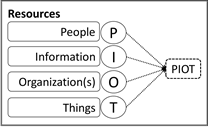
3.2 Processes
The spheres of production correspond to the four PIOT resources. These spheres combined four necessary processes: production, distribution, exchange (market) and consumption (PDEC) with the necessary parts of PIOT resources, including four SPHERONS employed in these spheres.
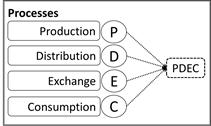
3.3 Spheres The four spheres of production are: 1. Social sphere, or Sociosphere (S), the subject and the product of which are people (P); 2. Information sphere, or Infosphere (I), the subject and the product of which is information (I); 3. Organizational sphere, or Orgsphere (O), the subject and the product of which are organization/s (O); 4. Technical (economic/ecological) sphere, or Technoecosphere (T), the subject and the product of which are things (T). 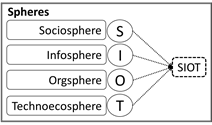 Spheres as the societal macrostructures cover all levels of the social world from macro (humanity) to micro (individual). 3.4 Spheral Classes: Spherons People employed in the SIOT productive spheres constitute four spheral classes, which briefly titled Spherons. Therefore, spheral classes and Spherons are synonyms. Four Spherons as the four productive spheral classes producing PIOT resources are: Sociospheron, Infospheron, Orgspheron and Technospheron. SPHERONS are actors of global peace, its ultimate cause, source and guarantee. 
Total population is the sum of people employed in these four SPHERONS:P = P1 + P2 + P3 + P4
Therefore, the number of all population/people in Pakistan as in any country (city, province, corporation and in humanity in a whole) is: P =P1 + P2 + P3 + P4 1.People/population (P) is the product of Sociosphere. People/population is produced for four spheres, therefore P = PI + P2 + P3 + P4,
Where: PI - is employed in Sociosphere; PI constitutes Spherons-1 or SOCIOCLASS, P2 - is employed in Info sphere; P2 constitutes Spherons -2 or INFOCLASS; P3 - is employed in Orgsphere; P3 constitutes Spherons -3 or ORGCLASS: P4 - is employed in Techno sphere; P4 constitutes Spherons -4 or TECHNOCLASS. 2.The employed in Sociosphere (P1), i.e. SPHERON-1 consists of two parts: a.the professionals working in social sector of this sphere (P1w) and b.all non-working (P1n) employed in the individual sector with self-production (pre-school children, students, housewives, non-working pensioners, disabled unemployed, etc.) and in the households. Therefore, the number of SPHERON-1 is the sum of employed in all sectors of this sphere: P1 = P1w + P1n. 3.To every SPHERONS a socially useful labor corresponds: P1w are employed by humanitarian labor, P2 - information labor, P3 - organizational labor, and P4 - material labor.
4. Classification of SPHERONS and Spheral Indices in their Sociocybernetic Genome (SOCIONOME) The purpose of this study is to determine the number of each SPHERON in Pakistan during 2014-15, the sum of which would be the total population of Pakistan. SPHERONS, as a whole, and the individuals who make them differ by main (on time) employment in one of the four spheres of society. Employment defines each person’s universal life characteristics from birth to death. All the time within people’s lives are devoted to produce various social resources. Within multidimensional topology of vital employment of people vary its two principal clusters: 1. Self-production or self-employment by person himself 2. Labor or economic employment of people by other resources except self-employed. The above two clusters of employment divide the entire population into two parts: 1. Nonworking (economically inactive) population employed in Sociosphere by self-production. 2. Working or economically active population employed in all spheres. The above two parts consist of special spheral indices of SPHERONS P.Population/people in general; P1.Socioclass who are employed in Sociosphere (first sphere); P1n.Non-working population who are employed in self-production of Sociosphere and forming part of the Socioclass; P1w.Working population who are employed in various branches/field of industries of Sociosphere and who constitute another part of the Socioclass.Therefore P1 = P1n + P1w. P2.Infoclass who are employed in branches of Infosphere (second sphere); P3.Orgclass who are employed in branches of Orgsphere (third sphere); P4.Technoclass who are employed in branches of Techno sphere (economic, fourth sphere). Each spheral class is a separate SPHERON covering part of the population employed in one of the four spheres of social production. The sum, of the number of people in the four SPHERONS is the population as a whole, which can be expressed as under: Population/People = Socioclass (non-workers + workers) + Infoclass + Orgclass + Technoclass. Symbolically, P = P1 (P1n + P1w) + P2 + P3 + P4 The spheral indices, which was used to express SPHERONS, are defined as follows: Table 1: Spheral indices of Spherons. Classifier of Spherons and their indices P | Population/people in general for any level and any community from family, school and town up to country and the world. | P1 | Socioclass, Spheron-1, who are employed (working and nonworking) in the branches of sociosphere (first sphere); | P1n | Non-working population, who are employed in self-production (‘autopoiesis”, Maturana)of sociosphere and forming the Spheron-1first part; | P1w | Working population in the branches of Sociosphere and who constitute the Spheron-1 second part. Therefore, P1 = P1n + P1w; | P2 | Infoclass, Spheron-2, who are working in branches of Infosphere (second sphere); | P3 | Orgclass, Spheron-3, who are working in branches of Orgsphere (third sphere); | P4 | Technoclass, Spheron-4, who are working in branches of Technosphere (economic, fourth sphere). |
Schematically, the sociocybernetic genome of the structural harmony of spherons’ global peace is represented as follows. Scheme. Sociocybernetic GENOME of Spheres and Spherons’ Structural Harmony 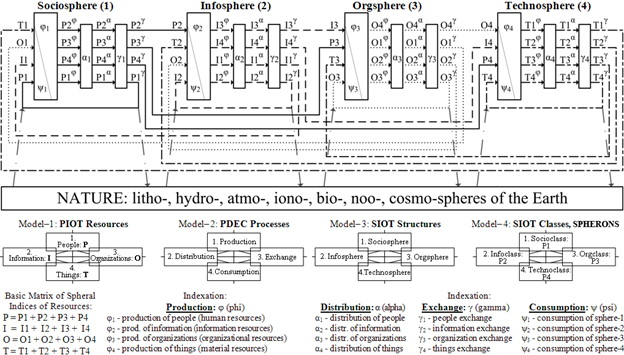 More details on SOCIONOME see [The ABC of Harmony for World Peace, 38-43: http://peacefromharmony.org/?cat=en_c&key=486and Video: http://youtu.be/hbxY5lREOeA It is obvious that the key role in the socionome among its 16 fundamental elements belongs to the Spherons who constantly reproduce it as bees in the swarm processes, therefore their statistical research at all levels, especially at the national level, is crucial for establishing peace in each country, and hence at the global level. only to this research is devoted our work. 5. Classification by Branches of Economic Activity and Categories of Personnel This study covers the statistical classifications of labour force as under: 1. Economic activity; 2. Industries/branches/types/kinds of economic activity (activities); These classifications are of the great help to define SPHERONS employed in four spheres, according to the number of employees in the industries of each sphere. 6. Concepts and definitions used in Pakistan Labour Force Survey: A brief explanation of the key concepts and definitions follows.
Household constitutes all those persons who usually live together and share their meals. A household may consist of one person or more who may or may not be related to each other.
Economically Active Population comprises all persons of either sex who provide labour services for the production of goods and services as defined by the United Nation System of National Accounts, during the reference period.The production of goods and services includes:
i) All production and processing of primary products whether for the market, barter or, own consumption. ii) The production of all other goods and services for the market. iii) The households which produce such goods and services for the market and own consumption. v) Own account construction. Currently Active Population or labour force comprises all persons ten years of age and above who fulfill the requirements for including among employed or unemployed during the reference period i.e. one week preceding the date of interview.
Crude activity rate is the currently active population expressed as a percentage of the total population in Pakistan.
Refined activity rate is the currently active population expressed as a percentage of the population 10 years and above.This rate enables international comparison by factoring in the effect of age composition.
Employment comprises all persons ten years of age and above who worked at least one hour during the reference period and were either “paid employed” or “self-employed”. Persons employed on permanent/regular footings have not worked for any reason during the reference period are also treated as employed, regardless of the duration of the absence or whether workers continued to receive a salary during the absence.The survey obtains information on the duration of absence as well as on other formal job attachment characteristics of workers in paid and self-employment.
Occupation refers to the type of work done during the reference period by the persons employed (or the kind of work done previously if unemployed), irrespective of the industry or the status in employment of the person. It provides description of a person’s job.Occupation is classified according to the Pakistan Standard Classification of Occupations based on the International Standard Classification of Occupations, ISCO-2015.
Industry means the activity of the firm, office establishment or department in which a person is employed or the kind of business, which he/she operates. The activity is defined in terms of the kind of goods produced or services supplied by the unit in which the person works.Industry is classified according to Pakistan Standard Industrial Classification (PSIC) 2007.
Self-employment job is a job where the remuneration is directly dependent upon the profits, or the potential profits, derived from the goods and services produced.
Status in Employment refers to the type of explicit or implicit contract of employment of the person with other persons or organization. Status of an economically active individual with respect to his employment i.e. whether he/she is an employer, own account worker, employee or unpaid family worker is defined as follows:-
Employee is a person who works for a public or private employer and receives remuneration in wages, salary, commission, tips, piece rates or pay in kind.Employees are divided into • Regular paid employees with fixed wage • Casual paid employee • Paid worker by piece rate or work performed • Paid non-family apprentice
Employer is a person working during the reference period, on own-account or with one or a few partners at a “self-employment job” with one or more employees engaged on a continuous basis.
Own account worker is a person working during the reference period, on own-account or with one or more partners at a “self-employment job”, without any employee engaged on a continuous basis; but, possibly, with one or more contributing family workers or employees engaged on an occasional basis. It includes owner cultivator, share cropper and contract cultivator.
Unpaid family worker is a person who works without pay in cash or in kind on an enterprise operated by a member of his/her household or other related persons.
Other includes member of a producer’s cooperative, etc.
Underemployment (Time-related) comprises all employed persons who during the reference period satisfied the following two criteria simultaneously:
i) Worked less than 35 hours per week, ii) Sought or were available for alternative or additional work.
Underemployment (Time-related) Rate is the time related underemployed population expressed as a percentage of the currently active population.
Unemployment in Pakistan comprises all persons ten years of age and above who during the reference period were:
i) “Without work” i.e. who were not in paid-employment or self-employment; and ii) “Currently available for work” i.e. were available for paid employment or self-employment: or iii) Not currently available for the following reasons: illness, will take a job within a month, is temporarily laid off, is an apprentice and is not willing to work: or iv) seeking work during last week.
Economically active population:According to Pakistan Labour Force Survey the economically active population includes persons aged 10 years and above who, were employed for economic activity during previous week of the survey or looking for work this economically active population is divided into two categories i.e. employed or unemployed. Not in labour force are the persons not looking for work such as students, household women etc. are included in P1n of Socioclass as one of SPHERONS. Table 2: Pakistan Standard Occupations Classification Code | Major Group | Code | Description | 1 | Managers | 11 | Chief executives, senior officials and legislators | 12 | Administrative and commercial managers | 13 | Production and specialized services managers | 14 | Hospitality, retail and other services managers | 2 | Professionals | 21 | Science and engineering professionals | 22 | Health professionals | 23 | Teaching professionals | 24 | Business and administration professionals | 25 | Computer related data base and software engineering professionals | 26 | Legal, social and cultural professionals | 3 | Scientists | 31 | Science and engineering associate professionals | 32 | Health associate professionals | 33 | Business and administration associate professionals | 34 | Legal, social, cultural and related associate professionals | 35 | Information and communications technicians | 4 | Clerical support workers | 41 | General and keyboard clerks | 42 | Customer services clerks | 43 | Numerical and material recording clerks | 44 | Other clerical support workers | 5 | Service and sales workers | 51 | Personal Services | 52 | Sales workers | 53 | Personal care workers | 54 | Protective services workers | 6 | Skilled agricultural, forestry and fishery workers | 61 | Market-oriented skilled agricultural workers | 62 | Market-oriented skilled forestry, fishery and hunting workers | 63 | Subsistence farmers, fishers, hunters and gatherers | 7 | Craft and related trades workers | 71 | Building and related trades workers, excluding electricians | 72 | Metal, machinery and related trades workers | 73 | Handicraft and printing workers | 74 | Electrical and electronic trades workers | 75 | Food processing, wood working, garment and other craft and related trades workers | 8 | Plant and machine operators, and assemblers | 81 | Stationary plant and machine operators | 82 | Assemblers | 83 | Drivers and mobile plant operators | 9 | Elementary occupations | 91 | Cleaners and helpers | 92 | Agricultural, forestry and fishery laborers | 93 | Laborers in mining, construction, manufacturing and transport | 94 | Food preparation assistants | 95 | Street and related sales and service workers | 96 | Refuse workers and other elementary workers | 0 | Armed forces occupations | 01 | Commissioned armed forces officers | 02 | Non-commissioned armed forces officers | 03 | Armed forces occupations, other ranks |
7. Sectoral differentiation of Spherons
Sectoral/branch differentiation and classification of spheres and spherons are presented in detail in the tables of their statics, which play the role of corresponding spheral/spherons classifiers: http://peacefromharmony.org/docs/global-peace-science-2016.pdf (pp. 32-36). Based on these tables, here we only list the working population groups, which are employed in the relevant spheres and constitute the corresponding spherons. P1. Socioclass/Sociospheron: it includes the non-working population (P1n) and the working one (P1w) in the Sociosphere (first sphere). It is people working in branches/institutions of health, education, sports, tourism, social welfare, life insurance, emergency situations, religious, trade union, charity, volunteer and similar organizations that provide direct services to human/people. In these branches/institutions, human/people constitute the subject and product of their activity, in which they differ from other spherons. P2. Infoclass/Infospheron: it includes the working population in the Infosphere (second sphere), in its branches/institutions: Culture, science, art, media, publishing houses, advertising, design, communication, and any information service. In these branches/institutions, information constitutes the subject and product of their activity, in which they differ from other spherons. P3. Orgclass/Orgspheron: it includes the working population in the Orgsphere (third sphere), in its branches/institutions: Administration, law, defense, security agencies, taxes, customs, banking and financial structures, political and public organizations. In these branches/institutions, organization is the subject and product of their activity, in which they differ from other spherons. P4. Technoclass/Technospheron: it includes the working population in the Technosphere (the fourth sphere), in its branches/institutions: Industry, agriculture, forestry and fisheries, construction, transport, trade, utilities and consumer services, environmental protection and ecology. In these branches/institutions, things and material services constitute the subject and product of their activity, in which they differ from other spherons. 7.1. SPHERONS OF PAKISTAN. Population of the Islamic Republic of Pakistan According to the Population Census, 2017 the population of Pakistan was 207.77 million, which was 132.01 million according to population census 1998. The population for the other years in between the Censuses is based on the population projections made by the technical committee formed by the Planning and Development Division of the Government of Pakistan, and officially being used by the Government. The population used for this study is based on the population projections made in 2007 (maybe in 2014-15?). 8. Economically Active (working) and inactive (non-working) Population: P1w The population projections provide estimates by gender, area, and broad age groups. The population estimates for the year 2014-15 used for the following exercise. Table below provides the estimated economically active (working) and inactive (nonworking) population by the age groups: Table 3: Economically Active (working) and inactive (non-working) population (in thousands) Age group | Population | Total | Active | Inactive | Male | Female | Total | Male | Female | Total | Male | Female | Total | 1 < 10 years | 0 | 0 | 0 | 28,046 | 26,154 | 54,200 | 28,046 | 26,154 | 54,200 | 2 10 to 60 years | 21,925 | 11,502 | 33,427 | 98 | 38,797 | 38,895 | 22,023 | 50,299 | 72,322 | 3 60 Years and above | 2,432 | 715 | 3,147 | 2 | 2,201 | 2,203 | 2,434 | 2,916 | 5,350 | Total | 24,357 | 12,217 | 36,574 | 28,146 | 67,152 | 95,298 | 52,502 | 79,370 | 131,872 |
Table 4:Percent distribution of population Age group | Population | Total | Active | Inactive | Male | Female | Total | Male | Female | Total | Male | Female | Total | 1 < 10 years | 0.00 | 0.00 | 0.00 | 21.27 | 19.83 | 41.10 | 21.27 | 19.83 | 41.10 | 2 10 to 60 years | 16.63 | 8.72 | 25.35 | 0.07 | 29.42 | 29.49 | 16.70 | 38.14 | 54.84 | 3 60 Years and above | 1.84 | 0.54 | 2.38 | 0.01 | 1.67 | 1.68 | 1.85 | 2.21 | 4.06 | Total | 18.47 | 9.26 | 27.73 | 21.35 | 50.92 | 72.27 | 39.81 | 60.19 | 100.00 |
Figure 1: Economically Active and Inactive Population
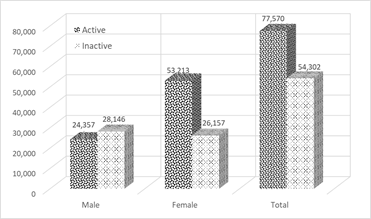 9. Pakistan’s SPHERONS Statistics for 2014-15
Table 5: Number of SPHERONS (Population in thousands) Spheral Indices | The Employed in Branches of Four Spheres | 2014-15 | Percentage of | Male | Female | Both | Total Population | Total Employed Population | P | All Population of Pakistan: P = P1+P2+P3+P4 | 96,478 | 92,712 | 189,190 | 100.0 | 100.0 | P1 | SOCIOCLASS: PI = Plw + Pin | 64,177 | 80,915 | 145,091 | 76.7 | - | P1w | Plw = sum of working in the branches of Sociosphere | 11,674 | 1,545 | 13,219 | 7.0 | 23.1 | | PEducation | 1,096 | 787 | 1,883 | 1.0 | 3.3 | | QHuman health and social work activities | 276 | 159 | 435 | 0.2 | 0.8 | | Other | 10,302 | 599 | 10,901 | 5.8 | 19.0 | P1n | P1n = Sum of non-working, economically inactive population | 52,502 | 79,370 | 131,872 | 69.7 | - | | Age group < 10 years | 28,046 | 26,154 | 54,200 | 28.6 | - | | Age group 10 to 60 years | 98 | 2 | 100 | 0.1 | - | | Age group 10 to 60 years | 21,925 | 50,297 | 72,222 | 38.2 | - | | Age group 61 and older, inactive | 2 | 0 | 2 | 0.0 | - | | Age group 61 and older, active | 2,432 | 2,916 | 5,348 | 2.8 | - | P2 | INFOCLASS = sum of working in the branches of Infosphere | 261 | 5 | 267 | 0.1 | 0.5 | P3 | ORGCLASS = sum of working in the branches of Orgsphere | 1,456 | 44 | 1,499 | 0.8 | 2.6 | | O Public administration and defence; compulsory social security | 224 | 5 | 229 | 0.1 | 0.4 | | K Financial and insurance activities | 132 | 4 | 136 | 0.1 | 0.2 | | Other | 1,099 | 35 | 1,134 | 0.6 | 2.0 | P4 | TECHNOCLASS = sum of working in the branches of Technosphere | 30,584 | 11,748 | 42,333 | 22.4 | 73.9 | | AAgriculture, forestry and fishing | 14,304 | 9,397 | 23,701 | 12.5 | 41.4 | | CManufacturing | 6,282 | 1,876 | 8,158 | 4.3 | 14.2 | | FConstruction | 4,039 | 25 | 4,065 | 2.1 | 7.1 | | GWholesale and retail trade; repair of motor vehicles and motorcycles | 1,263 | 30 | 1,293 | 0.7 | 2.3 | | Others | 4,696 | 420 | 5,116 | 2.7 | 8.9 |
The analysis of spheral classes shows that the majority of the population placed in the technoclass, Pakistan’s economy basically depends on agriculture, where 41percent of the population is involved, followed by the manufacturing which is mostly have the agro-based industries. The sociosphere like health and education, which basically for the human development is far below the actual requirement of the population. More than 40 percent of the population is illiterate, and about 35 percent of the children under five years facing stinting growth problems.
Figure 2: Working Population of Spheral Classes/Spherons
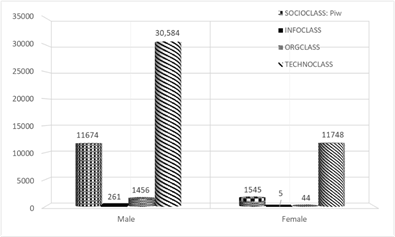 10. SPHERONS AT PROVINCE LEVEL – KHYBER PAKTUNKHWA 10.1. Population of the Khyber Pakhtunkhwa(KPK) According to the projections the population of KPK was 26.37 million in 2014-15. The KPK is the third largest Province in terms of population. 10. 2. Economically Active and in-active Population The economically active (working) and inactive (nonworking) population with broad age groups by gender of KPK for the year 2014-15 is presented below: Table 6:Economically Active (working) and inactive (non-working) population (in thousands) Age group | Population | Total | Active | Inactive | Male | Female | Total | Male | Female | Total | Male | Female | Total | 1 < 10 years | 0 | 0 | 0 | 4,336 | 3,862 | 8,198 | 4,336 | 3,862 | 8,198 | 2 10 to 60 years | 3,583 | 635 | 4,218 | 12 | 7,134 | 7,146 | 3,595 | 7,769 | 11,364 | 3 60 Years and above | 360 | 151 | 511 | 0 | 215 | 0 | 360 | 366 | 726 | Total | 3,943 | 786 | 4,729 | 4,348 | 11,211 | 15,559 | 8,291 | 11,997 | 20,288 |
Table 7:Percent distribution of Population KPK Age group | Population | Total | Active | Inactive | Male | Female | Total | Male | Female | Total | Male | Female | Total | 1 < 10 years | 0.00 | 0.00 | 0.00 | 21.37 | 19.04 | 40.41 | 21.37 | 19.04 | 40.41 | 2 10 to 60 years | 17.66 | 3.13 | 20.79 | 0.06 | 35.17 | 35.23 | 17.72 | 38.30 | 56.02 | 3 60 Years and above | 1.77 | 0. 74 | 2.51 | 0.00 | 1.06 | 0.00 | 1.77 | 1.80 | 3.58 | Total | 19.43 | 3.87 | 23.30 | 21.43 | 55.27 | 76.70 | 40.86 | 59.14 | 100.00 |
Almost similar pattern of active and inactive population by gender is observed in KPK as at the national level. 10.3. Working Population (KPK) As per population projection the estimated population of KPK Province during 2014-15 was 26.37 million, Socioclass engaged 30 percent of the population in KPK, of which only one percent were employed in health and social work activities, while 5 percent in education. More emphasis is required in the health sphere. 10.4. SPHERONS of Khyber Pakhtunkhwa (KPK) Province, 2014-15 Table 8: Number of SPHERONS of Population in thousands Spheral Indices | The Employed in Branches of Four Spheres | 2014-15 | Percentage of | Male | Female | Both | Total Population | Total Employed Population | P | All Population of KPK: P = P1+P2+P3+P4 | 13,281 | 13,086 | 26,367 | 100.0 | 100.0 | P1 | SOCIOCLASS: PI = Plw + Pin | 9,826 | 12,298 | 22,124 | 83.9 | - | P1w | Plw = sum of working in the branches of Sociosphere | 1,536 | 301 | 1,837 | 7.0 | 30.2 | | PEducation | 216 | 100 | 316 | 1.2 | 5.2 | | QHuman health and social work activities | 39 | 24 | 63 | 0.2 | 1.0 | | Other | 1,282 | 177 | 1,459 | 5.5 | 24.0 | P1n | P1n = Sum of non-working, economically inactive population | 8,290 | 11,997 | 20,287 | 76.9 | | | Age group < 10 years | 4,336 | 3,862 | 8,197 | 31.1 | | | Age group 10 to 60 years | 12 | 0 | 13 | 0.0 | | | Age group 10 to 60 years | 3,583 | 7,769 | 11,351 | 43.1 | | | Age group 61 and older, inactive | 0 | 0 | 0 | 0.0 | | | Age group 61 and older, active | 360 | 366 | 726 | 2.8 | | P2 | INFOCLASS = sum of working in the branches of Infosphere | 37 | 0 | 37 | 0.1 | 0.6 | P3 | ORGCLASS = sum of working in the branches of Orgsphere | 110 | 6 | 116 | 0.4 | 1.9 | | O Public administration and defence; compulsory social security | 20 | 1 | 21 | 0.1 | 0.4 | | K Financial and insurance activities | 4 | 1 | 5 | 0.0 | 0.1 | | Other | 86 | 4 | 90 | 0.3 | 1.5 | P4 | TECHNOCLASS = sum of working in the branches of Technosphere | 3,309 | 782 | 4,090 | 15.5 | 67.3 | | AAgriculture, forestry and fishing | 1,164 | 644 | 1,808 | 6.9 | 29.7 | | CManufacturing | 543 | 116 | 659 | 2.5 | 10.8 | | FConstruction | 736 | 4 | 740 | 2.8 | 12.2 | | GWholesale and retail trade; repair of motor vehicles and motorcycles | 148 | 2 | 150 | 0.6 | 2.5 | | Other | 717 | 16 | 733 | 2.8 | 12.1 |
11. SPHERONS Statistics for Punjab Province 11.1. Population of the Punjab Punjab province is the largest province in terms Population having about 54 percent of the total population of Pakistan, the estimated population for the year 2014-15 was 102.75 million. Fifty-four percent of the economically active population falls in the age group 10-60 years. 11.2. Economically Active (working) and inactive (non-working) population (in thousands) Thirty-eight percent of the female population in age group 10-60 years were available for work, however, did not have the jobs. Table 9:Economically Active (working) and inactive (non-working) population (in thousands) Age group | Population | Total | Active | Inactive | Male | Female | Total | Male | Female | Total | Male | Female | Total | 1 < 10 years | 0 | 0 | 0 | 14,321 | 13,505 | 27,826 | 14,321 | 13,505 | 27,826 | 2 10 to 60 years | 11,231 | 8,516 | 19,747 | 48 | 17,494 | 17,542 | 11,279 | 26,010 | 37,289 | 3 60 Years and above | 1,552 | 357 | 1,909 | 1 | 1,618 | 1,619 | 1,553 | 1,975 | 3,528 | Total | 12,783 | 8,873 | 21,656 | 14,370 | 32,617 | 46,987 | 27,153 | 41,490 | 68,643 |
Table 10:Percent distribution of Population Age group | Population | Total | Active | Inactive | Male | Female | Total | Male | Female | Total | Male | Female | Total | 1 < 10 years | 0.00 | 0.00 | 0.00 | 20.87 | 19.67 | 40.54 | 20.86 | 19.67 | 40.54 | 2 10 to 60 years | 16.36 | 12.41 | 28.77 | 0.07 | 25.48 | 25.55 | 16.43 | 37.89 | 54.32 | 3 60 Years and above | 2.26 | 0.52 | 2.78 | 0.00 | 2.36 | 2.36 | 2.26 | 2.88 | 5.14 | Total | 18.62 | 12.93 | 31.55 | 20.94 | 47.51 | 68.45 | 39.56 | 60.44 | 100.00 |
11.3. Working Population Of the total economically active population in Punjab, only 20 percent are employed in sociosphere, only 3 percent in education and less than one percent in human health and social activities, which is even less as compared to the province of KPK. Indicates more human development problems in Punjab as compared to KPK. The technoclass sphere engaged 76 percent of the employed labour force in Punjab, of these 44 percent in agriculture and 15 percent in manufacturing. 11.4 SPHERONS of Punjab Province, 2014-15 Table 11: Number of SPHERONS (Population in thousands) Spheral Indices | The Employed in Branches of Four Spheres | 2014-15 | Percentage of | Male | Female | Both | Total Population | Total Employed Population | P | Total Population of Punjab: P = P1+P2+P3+P4 | 51,526 | 51,220 | 102,746 | 100.0 | 100.0 | P1 | SOCIOCLASS: PI = Plw + Pin | 33,114 | 42,491 | 75,606 | 73.6 | - | P1w | Plw = sum of working in the branches of Sociosphere | 5,961 | 1,002 | 6,963 | 6.8 | 20.4 | | PEducation | 451 | 543 | 994 | 1.0 | 2.9 | | QHuman health and social work activities | 156 | 89 | 245 | 0.2 | 0.7 | | Other | 5,354 | 370 | 5,724 | 5.6 | 16.8 | P1n | P1n = Sum of non-working, economically inactive population | 27,153 | 41,490 | 68,643 | 66.8 | - | | Age group < 10 years | 14,321 | 13,505 | 27,826 | 27.1 | - | | Age group 10 to 60 years | 48 | 2 | 50 | 0.0 | - | | Age group 10 to 60 years | 11,231 | 26,008 | 37,239 | 36.2 | - | | Age group 61 and older, inactive | 1 | 0 | 1 | 0.0 | - | | Age group 61 and older, active | 1,552 | 1,975 | 3,527 | 3.4 | - | P2 | INFOCLASS = sum of working in the branches of Infosphere | 156 | 3 | 158 | 0.2 | 0.5 | P3 | ORGCLASS = sum of working in the branches of Orgsphere | 765 | 26 | 791 | 0.8 | 2.3 | | O Public administration and defence; compulsory social security | 102 | 2 | 104 | 0.1 | 0.3 | | K Financial and insurance activities | 55 | 1 | 56 | 0.1 | 0.2 | | Other | 608 | 22 | 630 | 0.6 | 1.8 | P4 | TECHNOCLASS = sum of working in the branches of Technosphere | 17,491 | 8,700 | 26,191 | 25.5 | 76.8 | | AAgriculture, forestry and fishing | 8,193 | 7,005 | 15,198 | 14.8 | 44.6 | | CManufacturing | 3,986 | 1,334 | 5,321 | 5.2 | 15.6 | | FConstruction | 2,164 | 17 | 2,180 | 2.1 | 6.4 | | GWholesale and retail trade; repair of motor vehicles and motorcycles | 803 | 27 | 831 | 0.8 | 2.4 | | Other | 2,345 | 317 | 2,662 | 2.6 | 7.8 |
12. SPHERONS Statistics for SINDH Province 12.1. Population of the Sindh The Sindh is the second largest province of Pakistan in terms of population, the estimated population for the year 2014-15 was 46. 8 million, which is about 24 percent of the total population of the country. 12.2. Economically Active (working) and inactive (non-working) population (in thousands) Thirty three million (71 percent) of the total population in Sindh is either not economically active. Fifty-seven percent of the population is in age group 10-60 years. Six percent of the female population in age group 10-60 years were available for work, however, did not have jobs. Table 12: Economically Active (working) and inactive (non-working) population (in thousands) Age group | Population | Total | Active | Inactive | Male | Female | Total | Male | Female | Total | Male | Female | Total | 1 < 10 years | 0 | 0 | 0 | 6,949 | 6,541 | 13,491 | 6,949 | 6,541 | 13,491 | 2 10 to 60 years | 5,463 | 1,991 | 7,454 | 35 | 11,354 | 11,389 | 5,498 | 13,345 | 18,843 | 3 60 Years and above | 401 | 54 | 455 | 1 | 410 | 411 | 402 | 464 | 866 | Total | 5,864 | 13,809 | 19,673 | 6,986 | 6,541 | 13,527 | 12,849 | 20,350 | 33,200 |
Table 13:Percent distribution of Population Age group | Population | Total | Active | Inactive | Male | Female | Total | Male | Female | Total | Male | Female | Total | 1 < 10 years | 0.00 | 0.00 | 0.00 | 20.93 | 19.70 | 40.64 | 20.93 | 19.70 | 40.64 | 2 10 to 60 years | 16.46 | 6.0 | 22.46 | 0.10 | 34.20 | 34.30 | 16.56 | 40.20 | 56.76 | 3 60 Years and above | 1.21 | 0.16 | 1.37 | 0.01 | 1.23 | 1.23 | 1.21 | 1.40 | 2.61 | Total | 17.67 | 6.16 | 23.83 | 21.04 | 55.13 | 76.17 | 38.71 | 61.29 | 100.00 |
12.3. Working Population- SINDH About a quarter of the total employed population were in sociosphere in Sindh during 2014-2015, of these 3.2 percent employed in education and less than one percent in the health and social work activities. These two important spheres of human development appear to be the neglected areas. Technosphere employed 70 percent of the employed labour force in Sindh, of these 39 percent in agriculture and 13 percent in manufacturing. 12.4. SPHERONS of Sindh Province Table 14: Number of SPHERONS (Population in thousands) Spheral Indices | The Employed in Branches of Four Spheres | 2014-15 | Percentage of | Male | Female | Both | Total Population | Total Employed Population | P | All Population of Sindh: P = P1+P2+P3+P4 | 24,571 | 22,238 | 46,809 | 100.0 | 100.0 | P1 | SOCIOCLASS: PI = Plw + Pin | 16,161 | 20,524 | 36,685 | 78.4 | | P1w | Plw = sum of working in the branches of Sociosphere | 3,312 | 173 | 3,485 | 7.4 | 25.6 | | PEducation | 328 | 102 | 430 | 0.9 | 3.2 | | QHuman health and social work activities | 59 | 36 | 94 | 0.2 | 0.7 | | Other | 2,925 | 36 | 2,961 | 6.3 | 21.8 | P1n | P1n = Sum of non-working, economically inactive population | 12,849 | 20,350 | 33,200 | 70.9 | | | Age group < 10 years | 6,949 | 6,541 | 13,491 | 28.8 | | | Age group 10 to 60 years | 35 | 0 | 35 | 0.1 | | | Age group 10 to 60 years | 5,463 | 13,345 | 18,808 | 40.2 | | | Age group 61 and older, inactive | 1 | 0 | 1 | 0.0 | | | Age group 61 and older, active | 401 | 464 | 864 | 1.8 | | P2 | INFOCLASS = sum of working in the branches of Infosphere | 56 | 1 | 57 | 0.1 | 0.4 | P3 | ORGCLASS = sum of working in the branches of Orgsphere | 440 | 9 | 449 | 1.0 | 3.3 | | O Public administration and defence; compulsory social security | 67 | 1 | 68 | 0.1 | 0.5 | | K Financial and insurance activities | 65 | 1 | 66 | 0.1 | 0.5 | | Other | 308 | 7 | 315 | 0.7 | 2.3 | P4 | TECHNOCLASS = sum of working in the branches of Technosphere | 7,914 | 1,704 | 9,618 | 20.5 | 70.7 | | AAgriculture, forestry and fishing | 3,897 | 1,428 | 5,325 | 11.4 | 39.1 | | CManufacturing | 1,599 | 204 | 1,803 | 3.9 | 13.2 | | FConstruction | 915 | 2 | 917 | 2.0 | 6.7 | | GWholesale and retail trade; repair of motor vehicles and motorcycles | 252 | 0 | 252 | 0.5 | 1.9 | | Other | 1,251 | 70 | 1,320 | 2.8 | 9.7 |
13. SPHERONS Statistics for BALOCHISTAN Province 13.1. Population of the Balochistan Balochistan is the largest province in terms of area, having only 7 percent of the total population of the country. The estimated population of Balochistan was 13.268 million in 2014-2015. . 13.2. Economically Active (working) and inactive (non-working) population (in thousands) Table 15:Economically Active (working) and inactive (non-working) population (in thousands) Age group | Population | Total | Active | Inactive | Male | Female | Total | Male | Female | Total | Male | Female | Total | 1 < 10 years | 0 | 0 | 0 | 2,439 | 2,247 | 4,686 | 2,439 | 2,247 | 4,686 | 2 10 to 60 years | 1,649 | 360 | 2,009 | 2 | 2,815 | 2817 | 1,651 | 3,175 | 4,826 | 3 60 Years and above | 119 | 36 | 155 | 0 | 76 | 76 | 119 | 112 | 231 | Total | 1,768 | 396 | 2,164 | 2,441 | 5,138 | 7579 | 4,210 | 5,533 | 9,743 |
Table 16:Percent distribution of Population Age group | Population | Total | Active | Inactive | Male | Female | Total | Male | Female | Total | Male | Female | Total | 1 < 10 years | 0.00 | 0.00 | 0.00 | 25.04 | 23.06 | 48.10 | 25.04 | 23.06 | 48.10 | 2 10 to 60 years | 16.93 | 3.69 | 20.62 | 0.02 | 28,89 | 0.02 | 16.95 | 32.59 | 49.54 | 3 60 Years and above | 1.22 | 0.37 | 1.59 | 0.00 | 0.78 | 0.00 | 1.22 | 1.15 | 2.37 | Total | 18.15 | 4.06 | 22.21 | 25.06 | 52.73 | 77.79 | 43.21 | 56.79 | 100.00 |
13.3. Working Population (P1n) Sixty-nine percent of the total employed population were in technosphere, of these, 39 percent in agriculture and10 percent in the manufacturing. Sociosphere employed 27 percent during 2014-2015. Less than one percent were employed in the human health and social work activities. 13.4. SPHERONS of Balochistan Province, 2014-15 Table 17: SPHERONS (Population in thousands) Spheral Indices | The Employed in Branches of Four Spheres | 2014-15 | Percentage of | Male | Female | Both | Total Population | Total Employed Population | P | All Population of Balochistan: P = P1+P2+P3+P4 | 7,100 | 6,168 | 13,268 | 100.0 | 100.0 | P1 | SOCIOCLASS: PI = Plw + Pin | 5,075 | 5,602 | 10,677 | 80.5 | - | P1w | Plw = sum of working in the branches of Sociosphere | 865 | 69 | 934 | 7.0 | 26.5 | | PEducation | 101 | 42 | 143 | 1.1 | 4.1 | | QHuman health and social work activities | 22 | 11 | 33 | 0.2 | 0.9 | | Other | 742 | 16 | 758 | 5.7 | 21.5 | P1n | P1n = Sum of non-working, economically inactive population | 4,210 | 5,533 | 9,743 | 73.4 | - | | Age group < 10 years | 2,439 | 2,247 | 4,686 | 35.3 | - | | Age group 10 to 60 years | 2 | 0 | 2 | 0.0 | - | | Age group 10 to 60 years | 1,649 | 3,175 | 4,824 | 36.4 | - | | Age group 61 and older, inactive | 0 | 0 | 0 | 0.0 | - | | Age group 61 and older, active | 119 | 112 | 231 | 1.7 | - | P2 | INFOCLASS = sum of working in the branches of Infosphere | 13 | 2 | 14 | 0.1 | 0.4 | P3 | ORGCLASS = sum of working in the branches of Orgsphere | 141 | 2 | 143 | 1.1 | 4.1 | | O Public administration and defence; compulsory social security | 35 | 1 | 36 | 0.3 | 1.0 | | K Financial and insurance activities | 8 | 0 | 8 | 0.1 | 0.2 | | Other | 97 | 2 | 99 | 0.7 | 2.8 | P4 | TECHNOCLASS = sum of working in the branches of Technosphere | 1,871 | 562 | 2,433 | 18.3 | 69.0 | | AAgriculture, forestry and fishing | 1,050 | 321 | 1,370 | 10.3 | 38.9 | | CManufacturing | 154 | 221 | 375 | 2.8 | 10.6 | | FConstruction | 225 | 3 | 227 | 1.7 | 6.4 | | GWholesale and retail trade; repair of motor vehicles and motorcycles | 60 | 0 | 60 | 0.5 | 1.7 | | Other | 383 | 18 | 400 | 3.0 | 11.4 |
Ps. In our innovative research, which is conducted for the first time, you can find terminological and statistical errors removable in the subsequent practice of these researches. 14. Conclusion In the country human development sphere (sociosphere) education and health cover the employed only 5 to 6 percent of the total employed population in the Country that have negative impact on the human development indices: Pakistan has the lowest literacy rate in the region. The Country also facing serious health problems, Pakistan has the highest maternal mortality rate. Due to high population growth, we have about 40 percent population below ten years of age, resulting high dependency ratio, transpires that around 70 percent population depends upon 30 percent working class in all spherons for their livelihood. Info and Org classes also have negligible share, while Technoclass is showing visible share. Poor sociosphere, which includes education, health indices and social care dependency rate add to restlessness and is hazardous to peace and prosperity. Statistical Research has a great role to play in achieving balance and harmony in Pakistan’s spherons. This is the only scientific way to strategize for structural balance in overcoming poverty, corruption and inequality. The Pakistan’s spheronsresearch will provide fundamental information that is necessary to achieve an optimal balance in the structural harmony of spherons and spheres of social production. Achieving spheral balance and harmony will ensure the creation and harmonization of the necessary strategies for overcoming poverty, corruption and inequality. This will bring lasting peace and prosperity to the country. We understand that our first statistical research of Pakistan’s spherons is only the first swallow and the initial step on the long journey of innovative statistical digital studies of the country’s social production as a whole. only its holistic spheral research using spheral statistics and its universal digital technology (SIST) [3] will provide the country's leadership with a large-scale monitoring of the dynamics of all spheral imbalances and disproportions in the country. This will allow developing an effective long-term economic, political, demographic and social policy that prevents crises and conflicts in the framework of ensuring and strengthening a lasting sustainable peace from the structural harmony of Pakistani spherons. To this end, the country needs priority investment and the development of appropriate scientific innovations and spheral statistical digital technologies. The same conclusion is for global peace. If such researches and their practical peacemaking consequences are obvious for separate countries, then they are adequate for other countries and for the gradual provision of global peace and prosperity of all nations on the basis of scientific knowledge and governance of the spherons’ structural harmony that generate them. This first statistical proof and the study of Pakistani spherons has great scientific, political, economic and peacemaking significance for the country. But it requires expansion both in time and in depth, in the provinces and in large cities, which will create spheral macro statistical map (Socionome) of its state and development with all its positive and negative trends, including trends in the growth of social tensions between the spherons in different regions and at different stages. This knowledge will allow the country's leadership to find harmonious ways to overcome these disharmonies and ensure a stable peace from the structural genetics of national spherons. But this requires a lot of innovative scientific and practical work in the future, which is just beginning and which will undoubtedly reach the level of conscious building global peace from its structural genetics. It is our scientific vision of national and global peace in the 21st century. References 1. Semashko Leo and 173 coauthors from 34 countries. Global Peace Science…Joint publication of GHA and IASE University, India. World textbook. The first publication in English, Smaran Publication, New Delhi. 2016. 616 p. ISBN 978-81-929087-8-6: http://peacefromharmony.org/docs/global-peace-science-2016.pdf 2. Pakistan Labour Force Survey 2014-15 3. Semashko Leo and the GHA coauthors (2018) Spherons: Global Peace Genetics of the XXI century. International Spheral Statistics: http://peacefromharmony.org/?cat=en_c&key=836 4. Kashina Olga and Semashko Leo (2014) Statistics of SPHERONS of Russia for 2010: Methodology, Sources and Number: http://peacefromharmony.org/?cat=en_c&key=593 5. Semashko Leo and the GHA coauthors (2012) The ABC of Harmony for World Peace (2012): http://peacefromharmony.org/?cat=en_c&key=486 6. Hornung Bernd, Scott Bernard, Semashko Leo (2003) Tetrasociology and sociocybernetics: Towards a comparison of the key concepts:http://www.peacefromharmony.org/?cat=en_c&key=160 7. Stephen Amoah and Ayo Ayoola-Amale (2018) Global Peace Science: Structural Harmony of Spherons and Statistics of Ghana’s Spherons for 2010, 2000 and 1984: http://peacefromharmony.org/?cat=en_c&key=836 Dr. Noor M. Larik:worked as Director General, Pakistan's Federal Bureau of Statistics as head of the organization, Ministry of Finance; Chief Statistician, Pakistan Council for Science and Technology (PCST). Email: nmlarik@hotmail.com Ms. Rashida Bokhari: worked as Principal, Training wing of Federal Bureau of Statistics (now Pakistan Bureau of Statistics). Email: rashida.bokhari@hotmail.com Syed Mazhar H. Hashmi: Worked as Deputy Director General, Federal Bureau of Statistics (now Pakistan Bureau of Statistics), also headed the FBS as acting Director General. Presently working as free-lance consultant. Also worked as National Statistical Advisor for the Pakistan demographic and Health Survey, 2011-12.E-mail: mazharibd@gmail.com Zia-ul-Islam:Started career as Statistical Assistant from Pakistan Institute of Development Economics then joined Federal Bureau of Statistics and got premature retirement as Chief Statistical Officer from Pakistan Bureau of Statistics and now working as consultant on various projects relating to statistical analysis and research. Currently involved in Socio-Economic Survey (baseline 2018) for Balochistan province. E-mail: hdrziaulislam@gmail.com 22-10-18 -----------------------------------------------------------------------------------------------------
Up
|